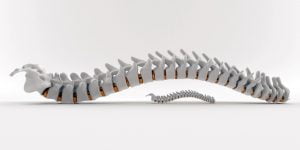- Understanding Back Pain
- The Role of Acupuncture in Back Pain Relief
- The Role of Physiotherapy in Back Pain Relief
- The Role of Chiropractic Care in Back Pain Relief
- The Role of Kinesiology in Back Pain Relief
- The Role of Massage Therapy in Back Pain Relief
- The Benefits of Physiotherapy for Back Pain
- Chiropractic Care for a Pain-Free Back
- Exploring Kinesiology as an Effective Back Pain Treatment
- The Healing Power of Massage for Back Pain
- Conclusion
Back pain is a common affliction that affects millions of people around the world, causing discomfort and limitations in daily activities. Whether it is caused by poor posture, muscle strain, injury, or underlying medical conditions, finding effective relief from back pain is paramount. While pain medications and surgery may be the first line of defense for some, acupuncture, physiotherapy, chiropractic care, kinesiology, and massage have gained popularity as potential avenues for back pain relief. [More]
Acupuncture, an ancient Chinese practice that involves the insertion of thin needles into specific points on the body, has been recognized for its potential to alleviate back pain. Acupuncture is based on the idea that the body has energy pathways known as meridians, and when these pathways are blocked, it can lead to pain and illness. By stimulating certain points along these meridians, acupuncture aims to restore the flow of energy, promoting healing and reducing pain. [More]
Physiotherapy, another non-invasive approach to back pain relief, focuses on restoring and improving physical function through targeted exercises and techniques. By addressing muscle imbalances, strengthening weak muscles, and improving posture, physiotherapy aims to alleviate pain and improve overall mobility. This evidence-based practice often includes a combination of manual therapy, exercise prescription, and education to empower individuals to take an active role in their recovery. [More]
Chiropractic care focuses on the relationship between the spine and the nervous system. Chiropractors use hands-on spinal manipulation and other techniques to address misalignments of the spine which are believed to hinder the body’s natural ability to heal itself. By restoring proper alignment and mobility to the spine, chiropractic care aims to relieve pain and enhance overall wellness. [More]
Kinesiology, a discipline that combines elements of anatomy, physiology, biomechanics, and psychology, offers a unique approach to back pain relief. Kinesiologists use a variety of techniques, such as muscle testing and movement analysis, to determine imbalances and dysfunctions in the body. Through personalized exercise programs, lifestyle modifications, and stress management strategies, kinesiology aims to restore balance and improve overall physical well-being. [More]
Massage therapy, a practice that involves kneading and manipulating the soft tissues of the body, has long been recognized for its ability to promote relaxation and relieve muscle tension. When it comes to back pain, massage can help improve blood circulation, reduce muscle spasms, and release endorphins, which act as natural pain relievers. This hands-on approach to healing not only provides physical benefits but also fosters a sense of relaxation and well-being. [More]
Some individuals may find significant relief from one particular therapy, while others may require a combination of approaches. It is also essential to consult with qualified healthcare professionals and explore these alternative therapies as part of a comprehensive treatment plan.
In the following paragraphs, we will delve deeper into the potential benefits of acupuncture, physiotherapy, chiropractic care, kinesiology, and massage in relieving back pain. We will explore the underlying principles behind each therapy, current research findings, and related considerations. By understanding the potential of these alternative approaches, individuals suffering from back pain can make informed decisions about their own path to healing and find the relief they are seeking.
Understanding Back Pain
Back pain is a common condition that affects millions of people worldwide. It can be caused by a variety of factors, including poor posture, muscle strain, injury, and underlying medical conditions. Understanding the root cause of back pain is essential in finding effective solutions for relief.
Causes of Back Pain

One of the most common causes of back pain is muscle strain or sprain. This can occur from lifting heavy objects, sudden movements, or poor posture over time. Other factors that can contribute to back pain include:
- Herniated Discs: When the soft, gel-like center of a spinal disc pushes through a crack in the tougher outer layer, it can irritate nearby nerves and cause back pain.
- Spinal Stenosis: This condition is characterized by the narrowing of the spinal canal, which puts pressure on the spinal cord and nerves, leading to pain and discomfort.
- Arthritis: Osteoarthritis and rheumatoid arthritis can affect the joints in the spine, causing inflammation and pain.
- Osteoporosis: Weakening of the bones due to age or other factors can make them more susceptible to fractures and can result in back pain.
- Scoliosis: This condition causes an abnormal curvature of the spine, which can lead to back pain, especially as it progresses.
It’s important to note that each person’s back pain may have a different underlying cause, so it is crucial to consult with a healthcare professional to determine the exact cause of the pain.
The Role of Acupuncture in Back Pain Relief
Acupuncture is an ancient practice rooted in traditional Chinese medicine. It involves the insertion of thin needles into specific points in the body to stimulate the flow of energy, or “qi.” Acupuncture has been found to be effective in relieving back pain by:
- Promoting blood circulation to the affected area, which can reduce inflammation and improve healing.
- Stimulating the release of endorphins, natural pain-relieving chemicals in the body.
- Relaxing muscles and reducing muscle spasms.
- Helping to correct underlying imbalances in the body that may contribute to back pain.
- Acupuncture is a safe and non-invasive treatment option for back pain relief. However, it’s important to seek treatment from a licensed and experienced acupuncturist.
One study published in the Journal of Alternative and Complementary Medicine found that acupuncture provided significant pain relief for participants suffering from chronic low back pain. The researchers observed improvements in both pain intensity and functional ability after a series of acupuncture treatments. Another study published in JAMA Internal Medicine reported that acupuncture was effective in relieving chronic back pain, surpassing conventional treatments such as medication or physical therapy.
During an acupuncture session, the practitioner will conduct a thorough assessment to determine the underlying causes of back pain. They will then insert hair-thin needles into specific acupuncture points, which may be located near the painful area or distal points elsewhere on the body. The needles are typically left in place for around 20 to 30 minutes, during which the patient may experience a sensation of warmth, tingling, or relaxation.
It is also important for individuals with specific conditions, such as bleeding disorders or pregnancy, to consult with their healthcare provider before undergoing acupuncture therapy.
Although the exact mechanisms of how acupuncture works are still being researched, its potential for back pain relief has gained recognition in both the medical community and among patients seeking alternative treatment options. Acupuncture can be used alone or in conjunction with other therapies, such as physiotherapy or chiropractic care, to enhance the overall effectiveness of back pain management. Through its ability to stimulate the body’s self-healing mechanisms, acupuncture offers a non-invasive, drug-free option for individuals seeking long-term relief from debilitating back pain.
The Role of Physiotherapy in Back Pain Relief
Physiotherapy, also known as physical therapy, is a healthcare profession that focuses on restoring and maintaining physical function and mobility. Physiotherapy can be an effective treatment option for back pain relief by:
- Providing manual therapy techniques, such as joint mobilization and soft tissue massage, to reduce pain and improve joint and muscle function.
- Creating a personalized exercise program to strengthen the muscles that support the spine and improve flexibility.
- Educating patients about proper body mechanics and posture to prevent further strain on the back.
- Using modalities like heat, ice, electrical stimulation, and ultrasound to alleviate pain and promote healing.
- Physiotherapy is a evidence-based approach to back pain management, and with chiropractic care, is often recommended as a first-line treatment option for acute and chronic back pain.
The Role of Chiropractic Care in Back Pain Relief
Chiropractic care is a healthcare discipline that focuses on the diagnosis and treatment of musculoskeletal conditions, particularly those affecting the spine. Chiropractors use manual techniques to adjust the spine and other joints in the body to alleviate pain and improve mobility. Chiropractic care can be effective in back pain relief by:
- Restoring proper alignment of the spine, which can relieve pressure on nerves and reduce pain.
- Promoting natural healing by improving blood circulation and reducing inflammation.
- Improving joint function and range of motion.
- Providing education on ergonomics, posture, and lifestyle modifications to prevent future back pain.
Chiropractic care is considered a safe and non-invasive treatment option for back pain relief. However, it is crucial to consult with a qualified chiropractor and discuss the specific nature of your back pain before undergoing any treatment.
The Role of Kinesiology in Back Pain Relief
Kinesiology refers to the study of human movement and exercise. In the context of back pain, kinesiology can help identify and address imbalances and dysfunctions that contribute to the pain. Kinesiologists can play a role in back pain relief by:
- Assessing and analyzing movement patterns and muscle imbalances that may be contributing to back pain.
- Designing exercise programs tailored to address specific weaknesses and imbalances.
- Providing guidance on proper body mechanics and movement techniques to prevent further strain on the back.
- Offering ergonomic assessments for workstations and providing recommendations to optimize posture and prevent back pain.
Kinesiology can be an effective adjunct therapy for back pain relief, especially when combined with other treatment modalities.
The Role of Massage Therapy in Back Pain Relief
Massage therapy involves the manipulation of soft tissues in the body to promote relaxation, improve circulation, and reduce muscle tension. Massage therapy can provide back pain relief by:
- Relieving muscle tension and spasms that can contribute to back pain.
- Increasing blood flow and oxygen supply to the affected area, promoting healing and reducing inflammation.
- Releasing endorphins, natural pain-relieving chemicals in the body.
- Improving overall relaxation, reducing stress, and improving sleep quality, which can indirectly contribute to back pain relief.
- Massage therapy can be a beneficial treatment option for back pain relief, but it’s important to seek treatment from a licensed and experienced massage therapist.
In conclusion, understanding the underlying causes of back pain is crucial in finding effective ways to manage and alleviate the pain. Acupuncture, physiotherapy, chiropractic care, kinesiology, and massage therapy are all potential treatment modalities that can help provide back pain relief. However, it is essential to consult with a healthcare professional to determine the most appropriate course of treatment based on the specific cause and nature of the back pain.
The Benefits of Physiotherapy for Back Pain
Physiotherapy is a non-invasive, drug-free approach to treating back pain. It focuses on improving physical function and reducing pain through a variety of techniques, exercises, and modalities. Here are some of the key benefits of physiotherapy for back pain:
- Pain Relief: Physiotherapy can provide significant relief from back pain. Through manual therapy techniques, such as massage, joint mobilization, and spinal manipulation, physiotherapists can help alleviate muscle tightness, reduce inflammation, and improve blood flow to the affected area. These interventions can effectively reduce pain and promote healing.
- Improved Flexibility and Range of Motion: Back pain often results in reduced flexibility and limited range of motion. Physiotherapists can design specific stretching and flexibility exercises to target these limitations and improve mobility. By targeting tight muscles and increasing flexibility, physiotherapy can help restore normal movement patterns and reduce stress on the spine.
- Strengthening and Core Stability: Weak muscles can contribute to back pain and instability. Physiotherapy includes exercises that focus on strengthening the muscles of the back, abdomen, and pelvic floor. These exercises help improve core stability, promote proper spinal alignment, and reduce the risk of future back pain episodes.
- Posture Correction: Poor posture is a common cause of back pain. Physiotherapists assess and address postural imbalances to promote a neutral spinal alignment. Through postural education and targeted exercises, they can help individuals improve their body mechanics and reduce the strain on the back muscles and spine.
- Education and Self-care: Physiotherapy emphasizes patient education. Physiotherapists provide guidance on proper body mechanics, ergonomics, and posture during daily activities. They also educate patients on self-care strategies, such as heat/cold therapy and the use of assistive devices, to manage pain and improve function. By empowering individuals with the knowledge and tools to manage their back pain, physiotherapy promotes long-term self-management.
- Prevention of Recurrence: Physiotherapy aims to address the underlying causes of back pain, not just the symptoms. By identifying and addressing postural imbalances, muscle weaknesses, and movement dysfunctions, physiotherapists help prevent future episodes of back pain. They can also provide strategies for maintaining a healthy back, such as specific exercises and lifestyle modifications.
- Individualized Treatment: Physiotherapy is a personalized approach to back pain treatment. Each individual’s needs and goals are taken into consideration when designing a treatment plan. Physiotherapists assess the individual’s condition, functional limitations, and personal preferences to develop a tailored program that addresses their specific needs.
- Collaborative Approach: Physiotherapists often work in collaboration with other healthcare professionals, such as doctors, chiropractors, and occupational therapists. This multidisciplinary approach ensures comprehensive care and enhances the effectiveness of treatment for back pain.
Physiotherapy offers a holistic and evidence-based approach to back pain management. By addressing the underlying causes, improving physical function, and promoting self-management, physiotherapy can provide long-term relief and help individuals regain their quality of life.
Chiropractic Care for a Pain-Free Back

Chiropractic care is a non-invasive and holistic approach to treating back pain by focusing on the alignment and proper functioning of the spine. Chiropractors are healthcare professionals who specialize in diagnosing and treating musculoskeletal disorders, with a particular emphasis on the spine.
How Does Chiropractic Care Work?
Chiropractic care is based on the belief that the body has the inherent ability to heal itself. Chiropractors use various techniques to manipulate the spine, aiming to restore alignment and mobility. By addressing misalignments, known as subluxations, chiropractors aim to alleviate pain, reduce inflammation, and improve overall well-being.
During a chiropractic session, the chiropractor begins by assessing the patient’s medical history and conducting a physical examination. This assessment helps them identify the underlying cause of the back pain and develop an individualized treatment plan.
Treatment Techniques Used in Chiropractic Care
Chiropractic care involves a range of treatment techniques, including:
- Spinal adjustments: This is the most common technique used by chiropractors. With precise and controlled force, chiropractors manually manipulate the spine to improve its alignment and address subluxations.
- Soft tissue therapy: Chiropractors may also use techniques such as massage, myofascial release, and trigger point therapy to address muscle tension and promote relaxation.
- Stretches and exercises: Chiropractors may prescribe specific stretches and exercises to improve flexibility, strengthen the supporting muscles, and promote proper posture.
- Lifestyle modifications: Chiropractors often provide lifestyle recommendations, such as ergonomic adjustments at work or home, to promote a healthier spine and prevent future back pain.
Benefits of Chiropractic Care for Back Pain
Chiropractic care offers several benefits for individuals seeking relief from back pain:
- Pain management: Chiropractic adjustments can provide immediate pain relief by reducing pressure on nerves and improving joint function.
- Improved mobility: By addressing spinal misalignments, chiropractic care can enhance mobility and range of motion, allowing individuals to perform daily activities with less discomfort.
- Drug-free approach: Chiropractic care focuses on natural and non-invasive techniques, eliminating the need for medication and reducing the risk of side effects.
- Holistic approach: Chiropractors not only treat the symptoms but also strive to address the underlying cause of the back pain, promoting overall wellness and long-term recovery.
Exploring Kinesiology as an Effective Back Pain Treatment
Kinesiology is a therapeutic approach that focuses on the movement and function of the body. It combines knowledge from various fields, such as anatomy, physiology, biomechanics, and psychology, to address pain and dysfunction in the musculoskeletal system. Many individuals experiencing back pain have found relief through kinesiology treatments.
One of the key principles of kinesiology is the belief that every muscle, joint, and organ in the body is interconnected. By examining and addressing imbalances in these systems, kinesiologists aim to restore optimal functioning and alleviate pain. This holistic approach takes into account not only the physical aspects of an individual’s condition but also their emotional and mental well-being.
Kinesiology treatments for back pain typically involve a combination of manual therapy, exercise prescription, and lifestyle modifications. Manual therapy techniques, such as joint mobilizations, soft tissue manipulation, and muscle energy techniques, aim to improve joint mobility, reduce muscle tension, and enhance overall structural alignment. These techniques can be particularly effective in addressing issues such as muscle imbalances, joint dysfunctions, and postural abnormalities, which are common contributors to back pain.
Exercise prescription is another essential component of kinesiology treatments. Kinesiologists work closely with their clients to develop personalized exercise programs tailored to their specific needs and goals. These programs may include stretching, strengthening, and postural correction exercises to target and address specific areas of weakness or imbalance contributing to back pain. By improving muscle strength, flexibility, and overall functional capacity, these exercises can help reduce pain, prevent future injuries, and promote long-term pain management.
In addition to manual therapy and exercise, kinesiology also emphasizes the importance of lifestyle modifications to support optimal back health. Kinesiologists often provide recommendations and guidance on ergonomics, posture awareness, stress management techniques, and other factors that can contribute to back pain. By addressing these lifestyle factors, individuals can make positive changes that support their overall well-being and minimize the recurrence of back pain.
One of the greatest strengths of kinesiology as a back pain treatment is its individualized and comprehensive approach. Kinesiologists assess each person’s unique circumstances and develop personalized treatment plans based on their specific needs and goals. This tailored approach allows for targeted interventions that address the root causes of back pain, rather than just treating the symptoms. By addressing underlying imbalances and dysfunctions, kinesiology treatments have the potential to provide long-lasting relief and sustainable improvements in back health.
The Healing Power of Massage for Back Pain
Massage therapy is an ancient healing practice that has been used for centuries to relieve pain and promote overall well-being. When it comes to back pain, massage can be an effective treatment option with numerous potential benefits.
How Massage Helps Relieve Back Pain
Massage works by targeting the muscles, tendons, and soft tissues of the body, promoting relaxation and easing tension. When applied to the back, massage can:
- Relax muscles: Back pain often involves tight and tense muscles. Massage can help loosen these muscles, relieving pain and improving flexibility.
- Increase blood flow: Massage improves circulation, helping to deliver more oxygen and nutrients to the affected area. This increased blood flow promotes healing and reduces inflammation.
- Release endorphins: Massage triggers the release of endorphins, which are natural painkillers produced by the body. These endorphins can help reduce back pain and improve mood.
- Improve range of motion: By targeting tight and restricted areas, massage therapy can help improve the range of motion in the back, allowing for better movement and flexibility.
Conclusion
There are many ways chronic back pain can be treated. At a multidisciplinary clinic such as Backs in Action, you have access to multiple treatment types from acupuncture, physiotherapy, chiropractic care, kinesiology and massage. Feel free to get in touch to determine which therapy or combination of therapies might be best for your individual situation and condition. We would be happy to help develop a treatment plan to provide long-term relief and return you back to your daily activities pain-free.




